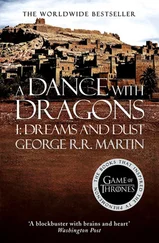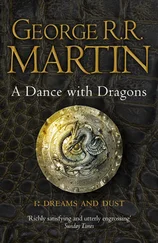The city the inhabitants know is composed of a certain number of elements that have a defined color and shape but do not possess a permanent location. They move about, vanishing then emerging again, like crystals in a kaleidoscope. Here, for nannies minding children there opens up a park surrounded by a cast-iron fence, here a great hotel presents itself, having previously demolished the stables of the light-horse barracks. Somewhere there rises an Orthodox church with a dome like a crystal that till now has been hidden behind others. One day Russian lettering disappears from the shop signs and is replaced with Gothic script. The streets bear now one set of names, now another. The statues on the plinths change; the fountain in the square is pulled down because an underground passageway is being built, and reappears many years later in a different place. The crystals move about in disorder, and it is only the arrangement of the mirrors that creates the illusion of regular, perfectly symmetrical wholes in which the element of the accidental temporarily acquires the status of principal structural component. The city is a work of the eyes. In them as in mirrors the random configurations of colored crystals are reflected and thus acquire symmetry and sense. A scratch on the glass, an unforeseen glint, a speck of dust, subjected to the same rule, multiplied and incorporated into the whole, defines the context. It is precisely in this way that Moscow and St. Petersburg appear here and also Paris and Lausanne: as optical illusions produced by blemishes in mirrors. It goes without saying that even the slightest movement of the elements must lead to significant changes in Paris and St. Petersburg. The shadow of a mote of dust on the mirror is sufficient for the cancan to begin in the cabarets; it may also alter the cut of full-length overcoats. Not to mention a good shake, which makes the crystals pile up and then scatter. The sudden appearance of an inconceivable connecting line between the two railway stations will threaten the equilibrium of the whole. The city, pulled in two directions, will incline dangerously toward Paris, where the Trans-Siberian Railroad is a paper share, one of many noted on the stock exchange, and where every day at dusk the terraces of the cafés are filled with laughing people who have never heard of it.
Many a Paris is inhabited by sentimental residents of St. Petersburg dressed in hotel livery, dexterously pocketing tips and surreptitiously wiping away tears of emotion, while one of the successive St. Petersburgs may turn out to be a provincial backwater completely invisible from beneath another name as beneath thick wrapping paper, a place that the inhabitants of Paris never visit. And yet even the tiniest scrap of wrapping paper amid the crystals of the kaleidoscope would suffice for the whole to take on a grayish coloration and a gloomy atmosphere, for wrapping paper utterly changes the properties of light.
It is possible to imagine a city perfect in its entirety, a city that is the sum of all possibilities. In it nothing is missing and nothing can perish; every china teacup comes from somewhere and is destined for somewhere. But precisely this absolute city is eaten away by the sickness of never-ending disasters. Change invariably brings confusion to the lives of the inhabitants. One has to pay attention so as not to drive accidentally onto a bridge that was demolished years ago, so as not to sit on the terraces of torn-down cafés once known for their unparalleled doughnuts. Long hours can be wasted waiting at the stops of long-canceled tram routes if one does not notice at once that the rails have been covered over with asphalt. One has to remember carefully where walls have been put up that once were not there. Crossing a market square filled with carts and horses with bags of oats round their necks, it is best not to forget about the nature of apartment buildings and about the opaqueness and firmness of their interior walls. That which one can bump into and hurt oneself on from a certain perspective is more real than the fleeting landscapes seen by a gaze turned in on the interior of the memory. The present moment slips through the fingers of the inhabitants of the city of changes; they must thus live by means of the past. They merely try not to knock their heads against the walls out of nostalgia for that which is no longer. They realize that it is not the walls that block their view. Even if they destroyed them with their gaze the marketplace with its horses and carts still would not return to its place. They would have too much to lose, considering that the alleyways, transparent as air, made by the cuboids that form an invisible frontage would be filled with a vacuum that with a whistle would suck in crumpled newspapers, umbrellas, hats, and recollections.
Lesser wholes can be more easily encompassed with the gaze. Every one of the supplementary cities hovers freely in space, as weightless and incorporeal as an image in a kaleidoscope. They are not linked by pipes or cables through which substance or energy could flow. They neither appear nor disappear, nor change into one another. Each exists for itself and is closed in on itself — and nothing in them ever changes. It is precisely because they endure so immutably that there has to be so many of them. But observers, who cannot get by without ordering events in their memory, try to combine them into a single whole so as to restore to the world its continuity and its consequentiality, its cause and effect. It is because of them that what is new becomes old and what is clean becomes dirty. The city seen by the observers is a place in which today’s dust falls on yesterday’s dust, in which bread goes stale, water dries up and iron rusts. There statues are erected and knocked down, while streets bear now one name, now a different one. The city woven from changes is a stage for perpetual entrances and exits that deteriorates a little more with every day, a place of losing and finding, breaking and mending, birth and death.
Past events leave traces in the memory like an ax chopping wood. Chips fly; they remain where they fall even after the wood has been used to light the stove. Trampled underfoot and rained upon, they slowly change color. If nothing can be preserved and saved, how are recollections supposed to resist changes? In this city of changes, ruled by memory, there had to be room for everything that memory has retained, yet every day its contents are reduced to shreds a little more. As if in a wardrobe where alongside an off-the-rack suit of low-grade wool there hangs a moldering yet good-quality uniform of a now defunct regiment, and between them a lady’s muff infested with moths.
It is for this reason that the spaces yawning inside heads are vaster than anything that can be thought up. Every one of the past and future cities thrust into the recesses of the world has its own star there, and it can also be said that each of these cities is the most important one. For is the world not composed exclusively of recesses? As is common knowledge some stars have been extinguished; a certain number of them were destroyed by stray helicopters. But the name guards the city against collapse, since it has the property of containing within itself all that was and is no longer and all that has been told to the marines.
Prey to longing and doubt, every night the unquiet city of recollections releases dreams — enchanted adhesive shoots that seek support in silence and darkness. Yet they find nothing but other dreams, and so the dreams attach to one another. They grow in all directions, creating knots and loops, twining around one another, merging together and then branching. There are dark dreams and bright dreams, beautiful dreams and horrible dreams. But their brightness always arises from darkness and their beauty from horror. The tangle of dreams, untouched by pruning shears, fills the whole world; it can even be said that it is the world and that the inhabitants of the city — along with their houses, their beds, their blankets, their recollections and their unanswerable questions — are only necessary for the dreams to be dreamed.
Читать дальше












